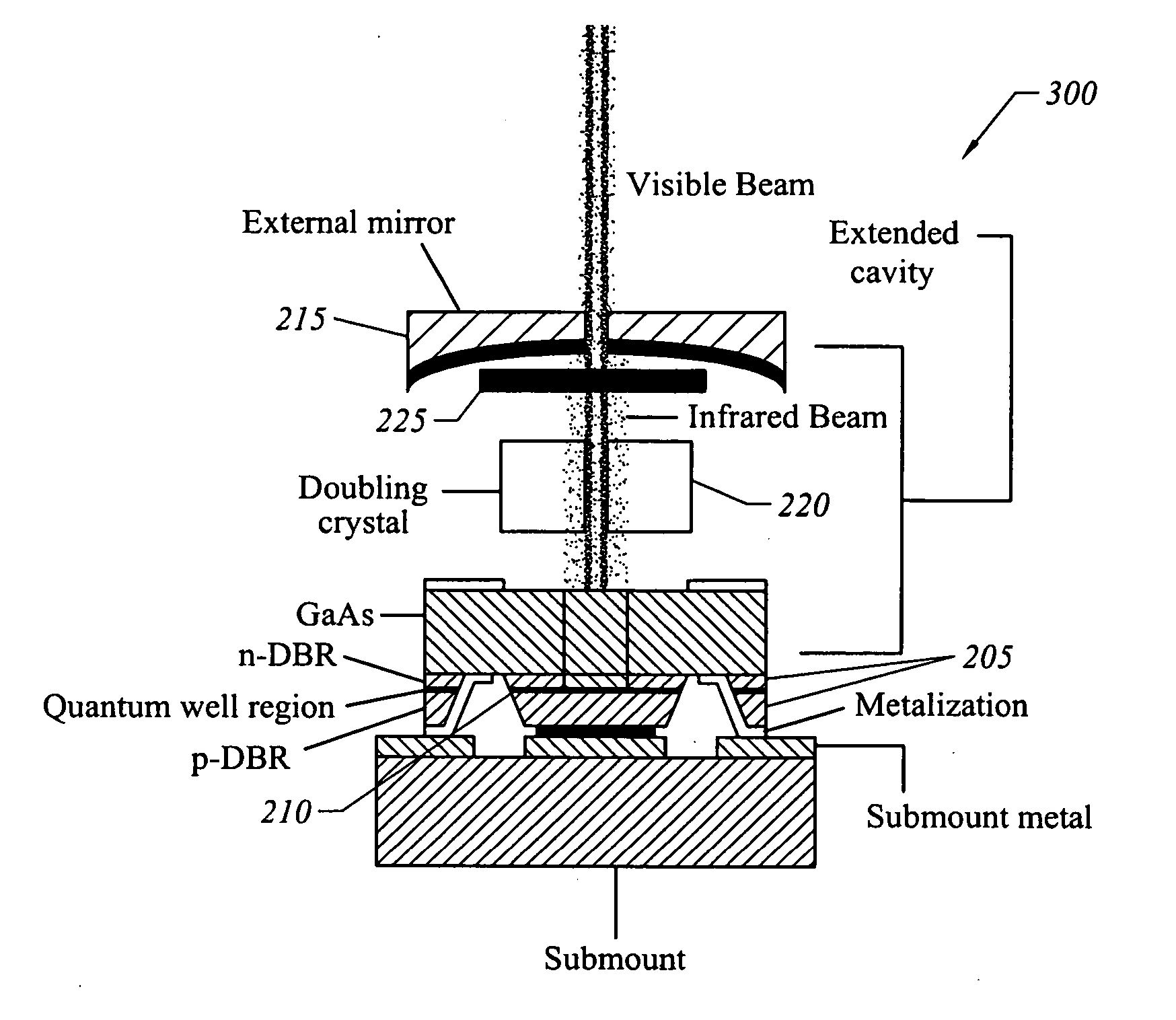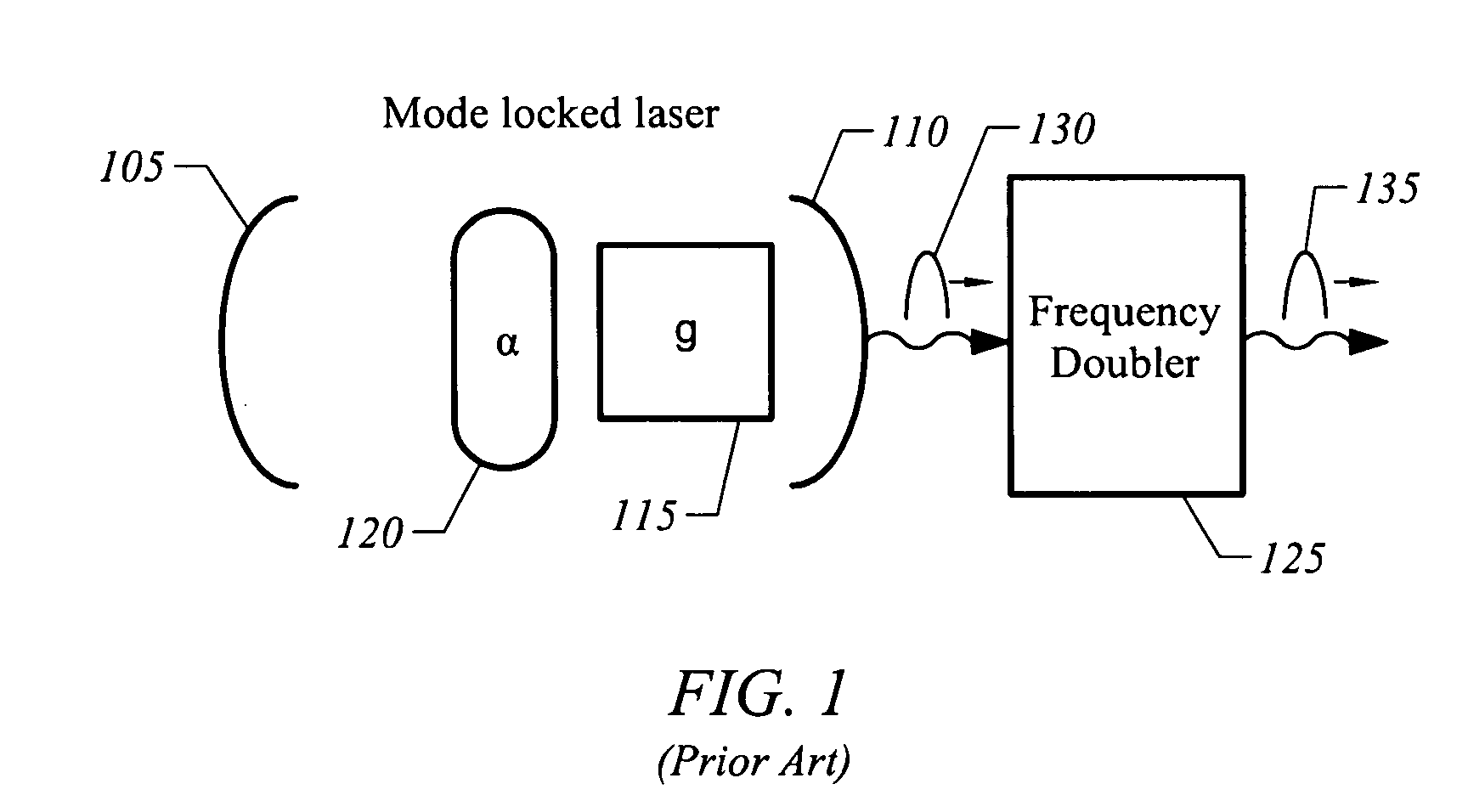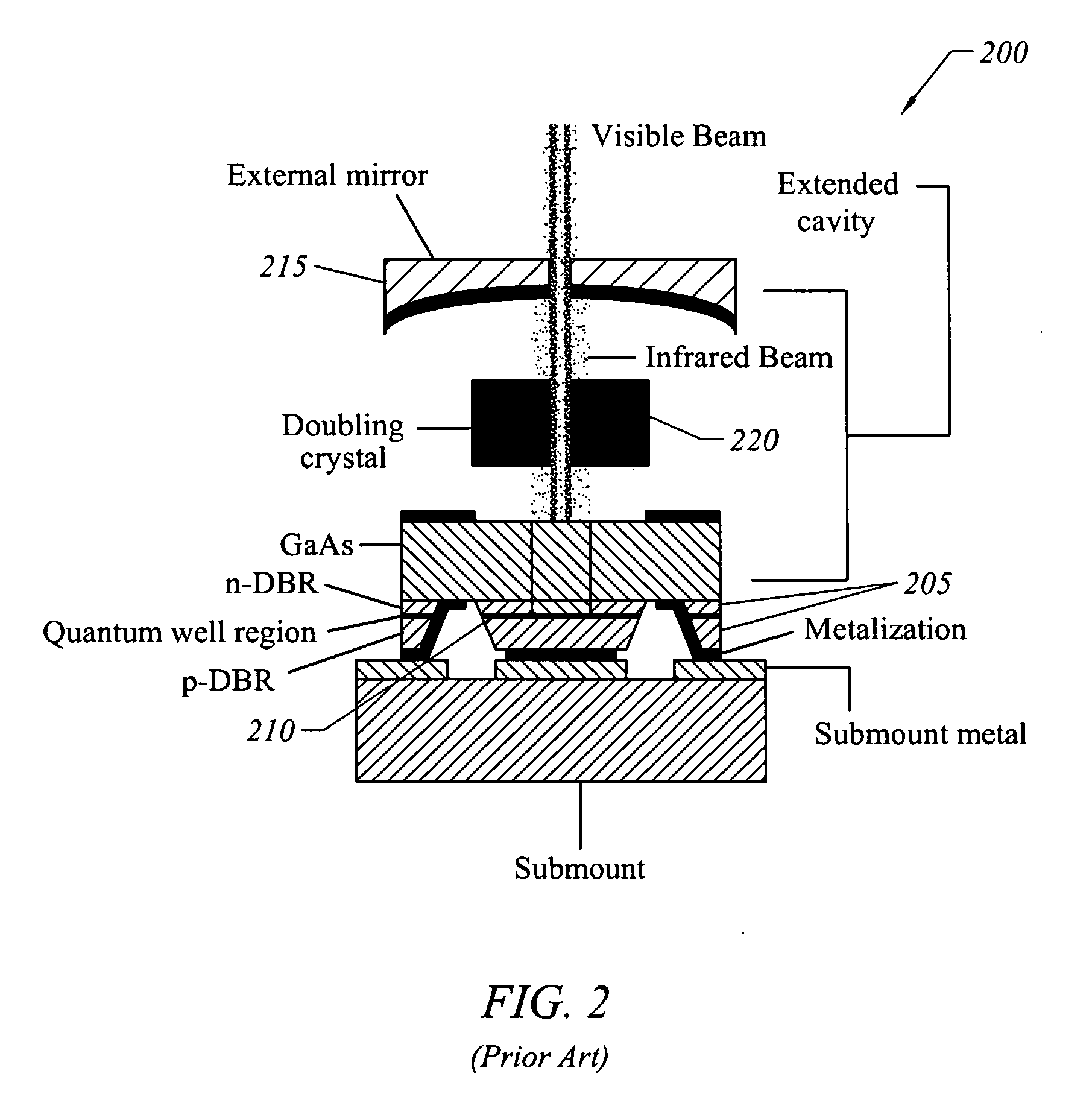Apparatus, system, and method for wavelength conversion of mode-locked extended cavity surface emitting semiconductor lasers
a semiconductor laser and extended cavity technology, applied in semiconductor lasers, laser details, electrical apparatus, etc., can solve the problems of de-phasing effect, insertion loss of second harmonic frequency, and increase the cost of lasers, so as to reduce spatial, temporal, or polarization overlap, reduce deleterious interference in nonlinear optical materials, the effect of reducing the spatial, temporal or polarization overlap
- Summary
- Abstract
- Description
- Claims
- Application Information
AI Technical Summary
Benefits of technology
Problems solved by technology
Method used
Image
Examples
Embodiment Construction
[0029]FIG. 4 is a block diagram illustrating a mode-locked laser system 400 in accordance with one embodiment of the present invention. Two or more reflectors 405 provide optical feedback for an optical resonator and may be arranged in a cavity or ring configuration. An optical gain element 410 provides optical gain about a fundamental frequency. The optical gain element 410 may comprise a solid-state, gas, liquid, or semiconductor laser gain medium.
[0030] Reflectors 405 and optical gain element 410 are selected to generate light at a fundamental frequency. Additional frequency selective elements (not shown) may be included to select a fundamental frequency of operation. An output coupler 420 is provided to extract at least a fraction of frequency converted light. A nonlinear optical material 425 is included to convert optical pulses at the fundamental frequency into frequency-shifted pulses at another frequency. In one embodiment nonlinear optical material 425 provides frequency d...
PUM
 Login to View More
Login to View More Abstract
Description
Claims
Application Information
 Login to View More
Login to View More - R&D
- Intellectual Property
- Life Sciences
- Materials
- Tech Scout
- Unparalleled Data Quality
- Higher Quality Content
- 60% Fewer Hallucinations
Browse by: Latest US Patents, China's latest patents, Technical Efficacy Thesaurus, Application Domain, Technology Topic, Popular Technical Reports.
© 2025 PatSnap. All rights reserved.Legal|Privacy policy|Modern Slavery Act Transparency Statement|Sitemap|About US| Contact US: help@patsnap.com



